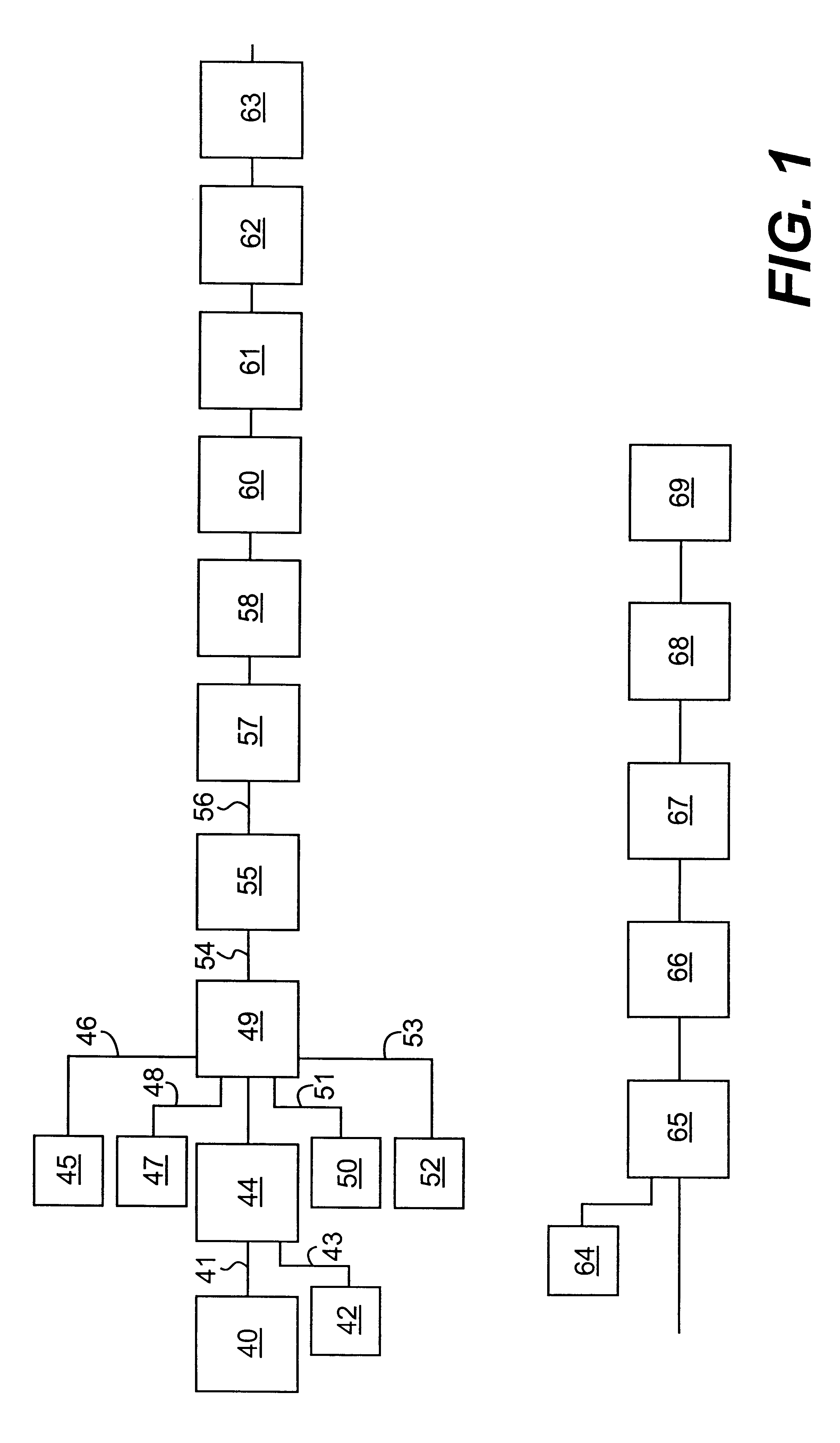Bulk enhanced paperboard and shaped products made therefrom
a technology which is applied in the field of enhanced paper and shaped products made therefrom, can solve the problems of poor retention of expandable microspheres or other bulk enhancing additives on the embryonic paper web, unnecessarily expensive enhancement process, and poor retention of microspheres
- Summary
- Abstract
- Description
- Claims
- Application Information
AI Technical Summary
Problems solved by technology
Method used
Image
Examples
example 2
The results of various tests conducted on hot drink cups formed from paperboard formed in Example 1 will now be described. The thermal resistance or thermal insulative properties of the paper were calculated in terms of "hold time," which is defined as the amount of time before a temperature of 128.degree. F. is obtained at the outer surface of a hot drink cup filled with liquid at about 190.degree. F. The results are depicted in the graph of FIG. 7 and show that the ability to hold a hot drink cup without discomfort increases as a function of increased addition of expandable microspheres. FIG. 8 shows the relationship of hold time to the density of the paperboard used to make the hot drink cup of the present invention. As seen there, the lower fiber densities resulting from higher proportions of added expandable microspheres are generally associated with longer hold times. Useful cups have a hold time of at least 30 seconds in the temperature range of 140.degree. F.-145.degree. F. ...
example 3
In this example, microsphere distribution in bulk-enhanced paperboard prepared as in Example 1 was compared visually to microsphere distribution in a commercial microsphere enhanced paperboard. They were then examined under .times.300 and .times.400 magnification and microphotographs were taken. Representative microphotographs are reproduced as FIGS. 3 and 4 with equal outer, middle, and inner regions A, B, C and A', B', C' indicated in dotted lines added to the photographs for comparison purposes.
FIG. 3, which shows paperboard prepared as in Example 1, at an .times.300 magnification reveals 7 microspheres in outer region A, 8 microspheres in middle region B, and 9 microspheres in bottom region C. In contrast, FIG. 4 at .times.400 magnification shows that the commercial prior art product had 31 microspheres in outer region A', 7 microspheres in middle region B', and 8 microspheres in bottom region C'.
example 4
These examples were carried out to determine the effect of the expandable microspheres on bulk properties of the paperboard web. This example sets forth the general procedure for carrying out the manufacture of paperboard utilizing different bulk additives and different retention aids. The manufacturing procedure is illustrated in FIG. 29. In subsequent examples specific variations are set forth.
Hardwood Kraft (80) and Softwood Kraft (81) lap pulps (in the ratio of 75%:25%) were pulped and refined together using a Jordan refiner to a Canadian Standard Freeness of 515, pumped to the mix chest (83) and stored in the machine chest (84). Alum (85) was added to the stock and the pH was adjusted to pH 4.8 using sulfuric acid (86) and then rosin size (87) was added. This stock was pumped to the stuff box (88) and then starch (89) and retention aid (90) were added to the stock at the down leg of the stuff box. This stock was then pumped via the fan pump (92) to the headbox of the paper mach...
PUM
| Property | Measurement | Unit |
|---|---|---|
| thickness | aaaaa | aaaaa |
| mean diameters | aaaaa | aaaaa |
| temperature | aaaaa | aaaaa |
Abstract
Description
Claims
Application Information
 Login to View More
Login to View More - R&D
- Intellectual Property
- Life Sciences
- Materials
- Tech Scout
- Unparalleled Data Quality
- Higher Quality Content
- 60% Fewer Hallucinations
Browse by: Latest US Patents, China's latest patents, Technical Efficacy Thesaurus, Application Domain, Technology Topic, Popular Technical Reports.
© 2025 PatSnap. All rights reserved.Legal|Privacy policy|Modern Slavery Act Transparency Statement|Sitemap|About US| Contact US: help@patsnap.com


